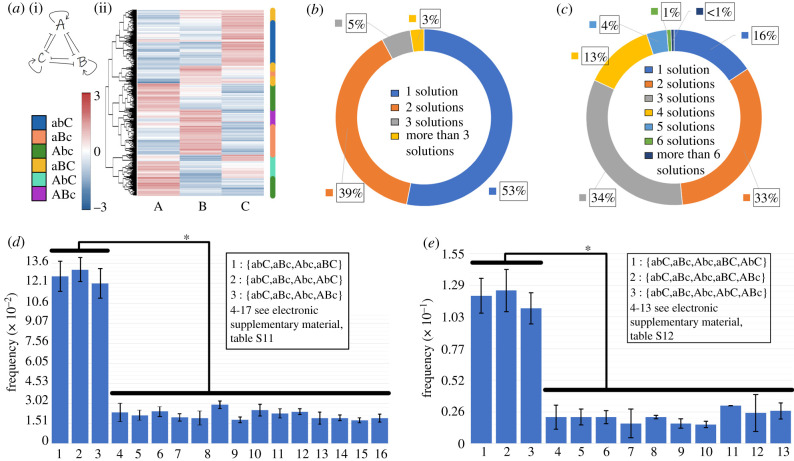Figure 6.
Characterization of toggle triad with three self-activations (TT + 3SA). (a) (i) Heatmap showing the all solutions for a TT + 3SA; (ii) the nomenclature shown capitalizes the node whose levels are relatively high. Thus, Abc denotes (A-high, B-low, C-low}, aBc denotes (A-low, B-high, C-low), abC denotes (A-low, B-low, C-high) (three ‘single positive’ states). ABc denotes (A-high, B-high, C-low), AbC denotes (A-high, b-low, C-high) and aBC denotes (A-low, B-high, C-high) (three ‘double positive' states). (b) Frequency of monostable, bistable and tristable solutions in a toggle triad (TT) shown as a pie chart. (c) Frequency of monostable, bistable, tristable, tetrastable and pentastable solutions for a TT + 3SA case shown as a pie chart. (d,e) Frequency of different tetrastable and pentastable phases are combinations of Abc, aBc, abC, aBC, AbC, ABc = {Abc, aBc, abC, aBC}, {Abc, aBc, abC, AbC}, {Abc, aBc, abC, ABc} (tetrastable) and {aBc, Abc, abC, aBC, AbC}, {aBc, Abc, abC, ABc, AbC}, {aBc, Abc, abC, aBC, ABc} (pentastable). Error bars denote the standard deviation of n = 3 independent RACIPE simulations. * denotes statistical significance (p < 0.05 for Student's t-test).

